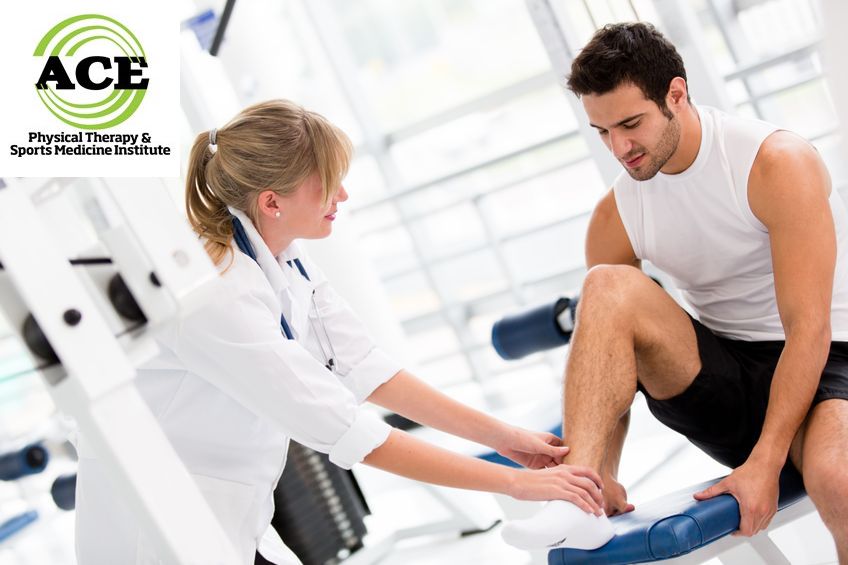AVOIDING AND TREATING ACUTE WORKOUT INJURIES

Tid Bits of Info
- Ice should be used immediately if you feel pain in a body part following activity.
- Activity modification rarely means stopping the workout completely.
- If treated properly, most soft tissue injuries will respond to treatment within 7-10 days.
- Soft tissue injuries can take several months to completely heal.
- Seek the advice of a Physical Therapist if you experience pain or other symptoms associated with an acute injury.
You’ve hit the new year running. Literally. After deciding to get in shape, you may be tempted to press full force into a new workout regimen. The commitment is great, but sometimes the intensity can lead to an injury. Proper precautions can reduce workout injuries. If you do get injured, proper steps can improve your recovery rate.
The most common form of overly aggressive workout are strains and sprains, but injuries to the musculoskeletal system can present themselves in many ways. To lower the likelihood of these injuries, you can adjust the frequency and resistance in your workouts. The frequency can be related to the amount of time or the number of repetitions that are performed of a particular exercise. The resistance can be the amount of weight, tensil strength of a resistance band, exercise level of a particular machine, or distance and difficulty of the terrain that someone travels over to perform their routine. By controlling these two factors, you can greatly reduce the stress and strain on the soft tissues and joints of your body.
When the stresses and strains are too great, the tissue or joints begin to “break down.” Injuries happen and when they do, proper treatment can help prevent them from lingering for too long. If treated improperly, they could be a problem for months.
All musculoskeletal injuries will become inflamed acutely. The inflammation process is the body’s way to protect and signal for the need to begin the healing process. Inflammation is associated pain and might cause limited motion and weakness. All of these symptoms cause the injured person to adjust workout to protect the injured body part.
If you suffer an injury in the form of a sprain or strain, modify your exercise routine and control the inflammatory process. This will help stimulate healing of the injured tissue. The best way to begin to control inflammation is by using ice. Ice is a great analgesic and removes the heat from tissue, slowing down the effects of the enzyme reaction that causes the inflammation. Ice can be applied “24/7” if there is a barrier between your skin and the bag of ice. If inflammation is present for too long, it can inhibit healing, so it’s important to remove the inflammatory agents to speed the healing process. If you are not allergic to anti-inflammatory medications (i.e. Aleve, Advil, Ibuprofen) you can begin taking this medication per the instructions on the box. These medications can control the inflammation which is the true cause of all of the symptoms associated with an acute injury.
Seeking the advice and treatment of a Physical Therapist is recommended if the symptoms do not resolve quickly (within 7-10 days). Physical Therapists are licensed healthcare professionals that are knowledgeable and well educated in the treatment of acute musculoskeletal injuries. Seeing a Physical Therapist is easy and does not require a visit to your doctor.
New Year’s resolutions that involve getting “into shape” by beginning a workout program are made by millions of people every year. If they perform their routine properly, there is a good chance that they will not injure themselves. Proper preparation and follow through with good technique, accurately prescribed number of repetitions with a resistance that is consistent with the person’s current physical conditioning level will help to avoid an injury. Treating an acute injury quickly will most assuredly reduce the healing time and enable the injured person to resume workout regimen and stick to fitness resolutions.

























